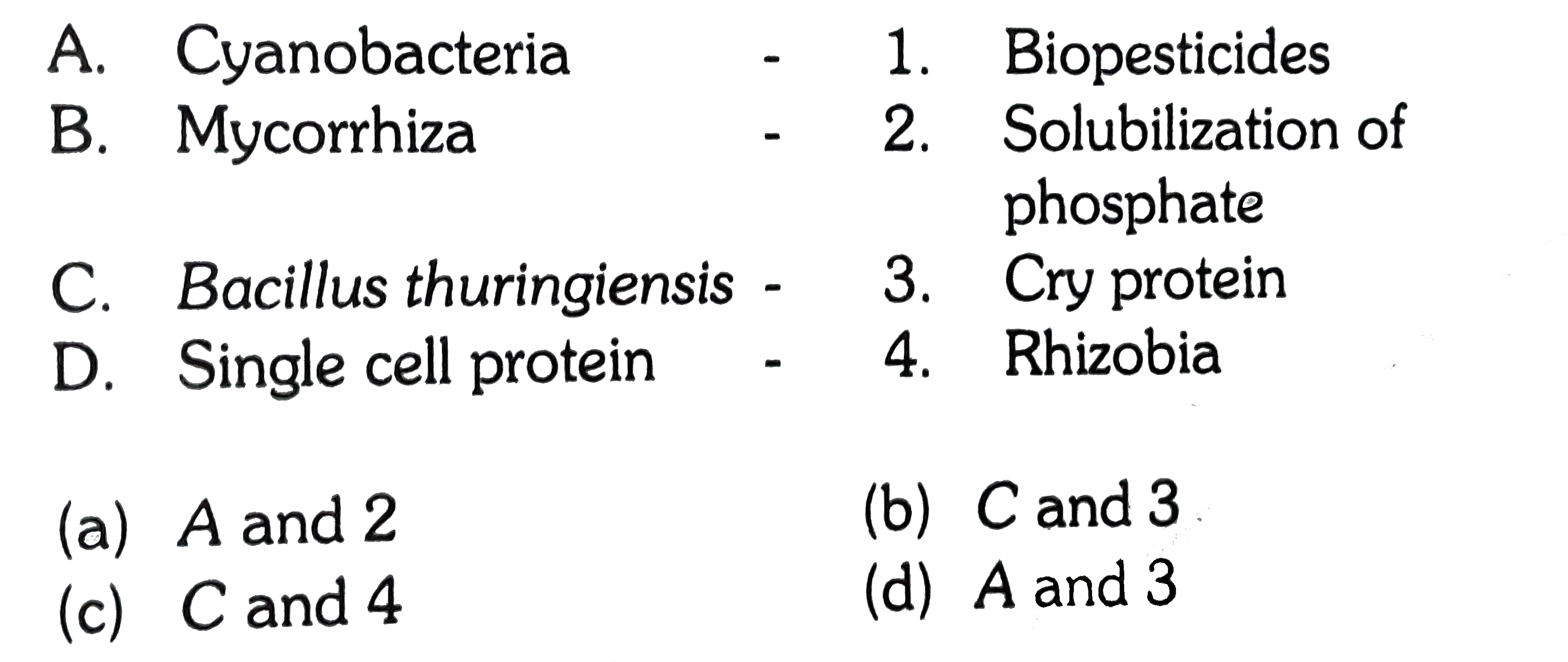Which is correctly matched
Centipede, Prawn, Sea Urchin - Jointed appendages
Cockroach, Locust, Taenia - Metameric segamentation
Scorpion, Spider, Cockroach - Ventral solid nerve cord
Liver fluke, Sea Anemone, Sea Cucumber - Bilateral symmertry.
The correct Answer is:C
To determine which option is correctly matched, we will analyze each option one by one based on the characteristics of the organisms listed.
1. Option 1: Centipede, Prawn, Sea Urchin - Jointed Appendages
- Centipedes and prawns belong to the phylum Arthropoda, which is characterized by jointed appendages.
- However, sea urchins belong to the phylum Echinodermata and do not have jointed appendages.
- Conclusion: This option is incorrect.
2. Option 2: Cockroach, Locust, Taenia - Metameric Segmentation
- Cockroaches and locusts are both arthropods and exhibit true metameric segmentation.
- Taenia, or tapeworms, belong to the phylum Platyhelminthes and do not exhibit true metameric segmentation; they show pseudo-segmentation.
- Conclusion: This option is incorrect.
3. Option 3: Scorpion, Spider, Cockroach - Ventral Solid Nerve Cord
- Scorpions, spiders, and cockroaches all belong to the phylum Arthropoda.
- Arthropods are known to have a ventral solid nerve cord.
- Conclusion: This option is correct.
4. Option 4: Liver Fluke, Sea Anemone, Sea Cucumber - Bilateral Symmetry
- Liver flukes belong to the phylum Platyhelminthes and exhibit bilateral symmetry.
- Sea anemones belong to the phylum Cnidaria and exhibit radial symmetry.
- Sea cucumbers belong to the phylum Echinodermata and exhibit biradial symmetry.
- Conclusion: This option is incorrect.
Final Answer:
The correctly matched option is Option 3: Scorpion, Spider, Cockroach - Ventral Solid Nerve Cord.
---
- Centipedes and prawns belong to the phylum Arthropoda, which is characterized by jointed appendages.
- However, sea urchins belong to the phylum Echinodermata and do not have jointed appendages.
- Conclusion: This option is incorrect.
- Cockroaches and locusts are both arthropods and exhibit true metameric segmentation.
- Taenia, or tapeworms, belong to the phylum Platyhelminthes and do not exhibit true metameric segmentation; they show pseudo-segmentation.
- Conclusion: This option is incorrect.
- Scorpions, spiders, and cockroaches all belong to the phylum Arthropoda.
- Arthropods are known to have a ventral solid nerve cord.
- Conclusion: This option is correct.
- Liver flukes belong to the phylum Platyhelminthes and exhibit bilateral symmetry.
- Sea anemones belong to the phylum Cnidaria and exhibit radial symmetry.
- Sea cucumbers belong to the phylum Echinodermata and exhibit biradial symmetry.
- Conclusion: This option is incorrect.
The correctly matched option is Option 3: Scorpion, Spider, Cockroach - Ventral Solid Nerve Cord.
Topper's Solved these Questions
- PHYLUM - ARTHROPODABOOK - DINESH PUBLICATION ENGLISHCHAPTER - PHYLUM - ARTHROPODAEXERCISE - CYG
20 Videos
- PHYLUM - ANNELIDABOOK - DINESH PUBLICATION ENGLISHCHAPTER - PHYLUM - ANNELIDAEXERCISE - Check your grasp
10 Videos
- PLANT BREEDING AND DISEASE CONTROLBOOK - DINESH PUBLICATION ENGLISHCHAPTER - PLANT BREEDING AND DISEASE CONTROLEXERCISE - Check your Grasp
10 Videos
Similar Questions
Knowledge Check
Which is not correctly matched?
ALaterite contain's aluminiumBTerra rosa- Most suitable for rosesCChemozen-Richest soilDBlack Cotton Soil-Rich in calcium carbonate
Find out the pairs, which are correctly matched

View SolutionWhich one is correctly matched?
View SolutionWhich is not correctly matched?
View SolutionWhich is not correctly matched
View SolutionWhich is not correctly matched
View Solutionwhich is not correctly matched ?
View SolutionWhich is not correctly matched ?
View Solution
